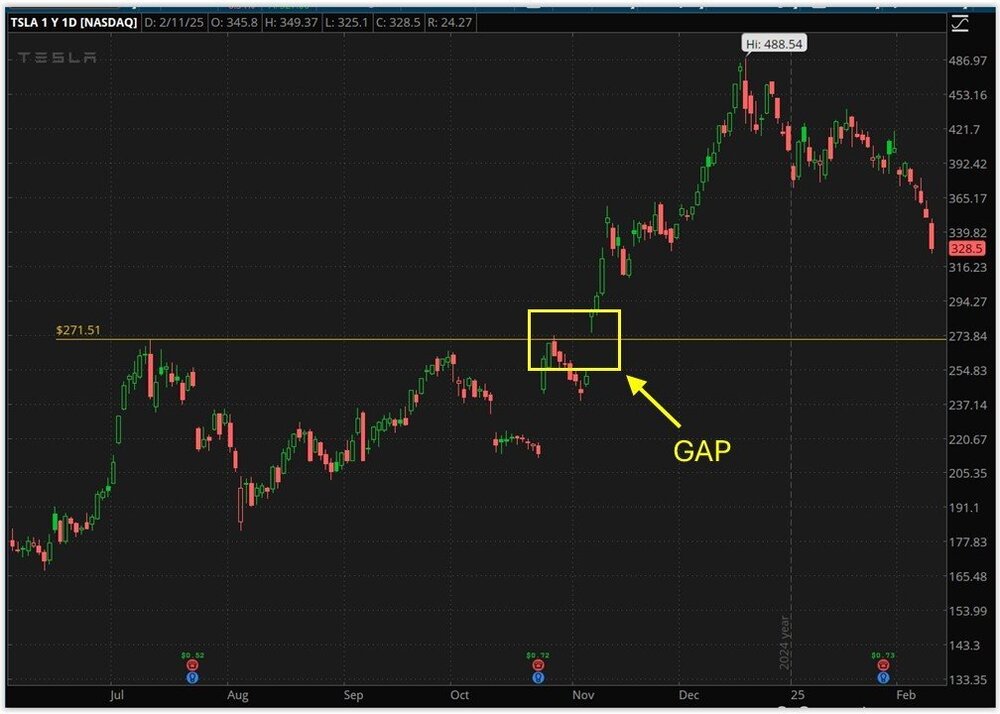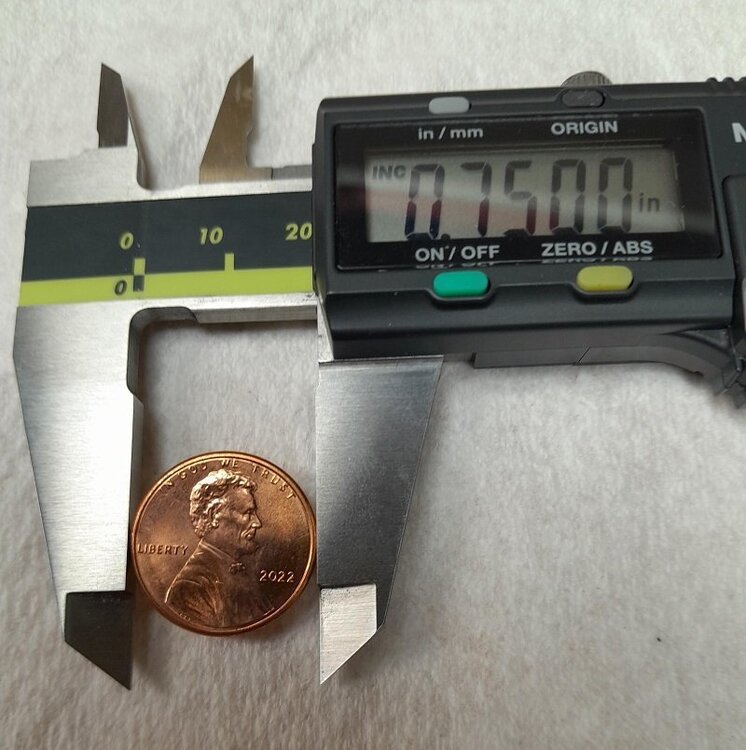
Screwball
Members-
Posts
1,287 -
Joined
-
Last visited
Content Type
Profiles
Forums
Events
Blogs
Store
Articles
Everything posted by Screwball
-
Let's revisit this little puppy. The chart above this one was from the 13th, last Thursday, then took a dive Friday. Got 3 days off and went nuts today. Broke into the area with the red arrow. Great trade if you made it. Of course I didn't.
-
It is. Simple example. I create a directory for each of my students so I can store their assignments. If you open file manager (old name, explorer now?), hold down the shift key and right click on the directory, you can open a "command shell" window. Looks just like the original DOS window. Type MKDIR, put in a bunch of names separated by commas and you instantly have that many directories. Easy button defined. Funny, I can't do this at school. The IT nazi's have that little trick restricted, but have an ocean of other stuff dicked up to the highest degree. Go figger...
-
I'm a lifelong computer guy, worked in IT (and related), and feel very fortunate to ride that train over the years. Put food on the table and a roof over my head. I'm also impressed with the gains in technology. Anyone remember MS-DOS? Look where we are now. Impressive stuff. But this AI stuff scares the **** out of me.
-
It would no doubt be a large project, but convert databases by custom code, then consolidate into the new system. We've had time. Or maybe AI will solve it...
-
I'm not a programmer, but it seems to me this kind of stuff, let's call it legacy database type data, someone along the line would have found a way to update the data form so it would no longer be a problem.
-
I remember this. There were some freaked out people. Year 2000 problem Could be in the history thread.
-
-
I did a little searching and found a couple of interesting articles. First one is from Nov 23 on the water issues; New Albany’s search for water for Intel goes far beyond Granville Then this one from Sept of 24; Intel’s New Albany facility will be spun off into new company under restructuring plan From the first article, water does seem to be a problem. I don't know what is going on now, but I have a request for information from puppy #1.
-
Adding; Next time I talk to the #1 son I will ask him about the plants. He's into that stuff as it's kind of his trade. I was just there last Sunday to watch one of my grand daughters play in a basketball tournament. True story; Ohio State football coach Ryan Day walked right in front of us. I could have said hello. That was pretty wild. We are not Ohio State fans FTR.
-
Good stuff, and thanks. Like I said, I don't follow this industry that close, but now that I think about it, Intel was/is going to build some chip plants in New Albany, Ohio. Doing a little research, they are still building and expected to open by 2027 or face penalties. Broke ground in 22. Real estate exploded down around there as this started. My oldest lives about 10 minutes away. I have also read, and I'm not sure if this is the right kind of process, but some take a whole bunch of water. I don't know where they are getting that down there, or if they don't need it.
-
At the same time, from that article Del posted, which was over my head quite quickly. Giggle. I don't follow that stuff, but I skimmed through it. But it did say this; I wonder if this is part of what made INTC stock jump?
-
I remember back in the day when INTC was a leader and set the tone for the industry. Now, I don't think that's the case. In this deal, I think INTC outsoures to TSM now. But I don't follow this enough to know what this does/might do to INTC bottom line.
-
I sure wish I would have bought some INTC stock last week. Chart porn incoming... This is a 1 year INTC chart by day. Been ugly since last March, until last week. Huge gap (red arrow) and then the rocket shot for the last 4 trading days. Depending on how you measure it, up to 27%, around 25% if you use closing price. Looking back a little further, here is a 3 year weekly chart which puts things into better perspective if you are into chart porn. This has to do with INTC and Taiwan Semiconductor, ticker TSM, which, over the same time period, their chart looks uneventful. For a pure trader I would let some run, but take some off the table at this point. That gap may fill at 28ish, that would be a 50% rip. Pull the rip cord and thank the market whore for this one and move on.
-
My favorite stock of all time was POT. Potash company from Canada.
-
I also forgot, less than 3 percent of TSLA's float is short.
-
On the TSLA trade stuff. I was curious so I got into some chart porn. From a trading standpoint, Del was right above when he said you should have pulled the rip cord a while back. Below chart going back to June 2024. Obvious support/resistance at $271.51 (back on 7/11/24). Late October to early November you can see a gap around that same level. Not noticeable unless you take a closer peek. 273.54 to 275.62. Not a big gap, but a gap. Stock hit a high of $488.54 on 12/18/24, and has went down since. That is obvious by the daily candles. If I wanted to trade TSLA I would wait until that gap fills (all gaps fill). ADDING: I'm expecting the price to close that gap. If and when that happens, that would be the time to buy.
-
I'm in my sixth year of teaching (STEM class) after retirement. Once I get through this semester I'm done and gone. It has progressively gotten worse over that time. Students and staff. I renamed academia to acadummia a few years ago. They must be a subsidiary of corporate America and the world of Office Space and Dilbert, and maybe worse. Your ass is here at school because you sucked as an engineer, accountant, or administrator. It sure ain't for the money.
-
I don't know? Someone who understands ballistics (internal and external) might have a pretty good grasp on physics. I'll let myself out.
-
I don't think the article really gave us much on where they were found, or how they came about. Jailhouse recordings of Carlos Marcello is a new one in my memory (if true). The mob angle was always interesting. I'm old, and I remember my dad talking about the mob. He was born in 1911. He had some ties via gambling. Ruby was rumored to have ties to the mob. Probably should be in the history thread.
-
I could probably put this in the investing thread because it is about money, but it's only pennies... I'm sure the penny thing will become a hot topic in the coming days and it got me to thinking. As I understand it, the idea is to quit making pennies. What do we know about pennies? 1/100 of a dollar. Since I'm a retired engineer and have been brainwashed to think process/price/savings first or I get sent to corporate Siberia, my first thought was to look into the numbers. United States Mint does a nice job giving us just that. This link is really cool as it shows us how coins are blanked from sheets into pretty coins down the road. Links to specifications from weight, content, and size. A penny is suppose to be .750 diameter, which you can find a link to in the first link below. Coin Production - US Mint This is a link to how many pennies are produced by year. Circulating Coins Production In 2024 there were two different pennies minted from two different mints (Denver/Philly). Grand total of 3,338,000,000. As far as diameter;
-
The smart answer is to take the money, but to each his own. I would think about it a bit, then roll the dice. And no doubt lose. That's gambling. If not, what would you do with a billion? I'd make a few phone calls and set up a plan on how to spend a billion to help the most people possible in the shortest amount of time. The interesting part would be how to balance necessary costs to results. Once the money is gone, game over. In today's world a billion isn't a lot of money. Or, you could be the guy that said he spent half his money on booze, drugs, and fast women, and the other half he wasted. 🙂
-
I wonder how the crypto stuff is collaterialized (with leverage). Sure is a bunch of money. If **** happens, who gets blown up? That might be fun. According to the futures the S&P and NASDAQ will open gap down 2-3 percent tomorrow morning as it looks right now. They don't appear to be too spooked as they have stabilized since open. Unless you consider that spooked.
-
Interesting day, and Cramer is still in front of a TV camera. Wild how the Dow ends up almost 290 points while the S&P and the tech heavy NASDAQ got whacked. As stated above, AAPL held up, NVDA not so much. Dow 30 heatmap; Looking at chart of the same, what a huge move during the day. Gap down open, takes a huge **** to 44026, then decides to go up all day to close at 44713, hitting 44727 just a minute before. That's a 687 point swing. Cha-ching!!!! And the NVDA chart. This is a one year chart. I would we watching the 97.4 if it keeps going the wrong way.
-
Pretty good and free article from IBD on NVDA; DeepSeek-Driven Crash Makes Nvidia Investors Face 8 'Secrets' Of Selling. No. 2 Is Key.
-
Willie Mosconi the great player was the billiard/pool consultant, and also had a cameo roll. The boxer (middleweight champion) Jake LaMotta was the bartender. I have read Gleason did many of his own shots as he was a very accomplished player. You can tell he spent quite a bit of time on the table by the way he held the cue stick.




